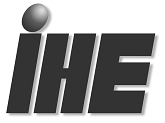PCC Technical Framework Wikified
HIMSS and RSNA
Integrating the Healthcare Enterprise
IHE Patient Care Coordination
Technical Framework
Volumes I and II
Revision 2.0
2007-2008
Comment
Comments
http://forums.rsna.org under the “IHE” forum
Select the appropriate sub-forum for the technical framework you are commenting upon.
Forward
Integrating the Healthcare Enterprise (IHE) is an initiative designed to stimulate the integration of the information systems that support modern healthcare institutions. Its fundamental objective is to ensure that in the care of patients all required information for medical decisions is both correct and available to healthcare professionals. The IHE initiative is both a process and a forum for encouraging integration efforts. It defines a technical framework for the implementation of established messaging standards to achieve specific clinical goals. It includes a rigorous testing process for the implementation of this framework. And it organizes educational sessions and exhibits at major meetings of medical professionals to demonstrate the benefits of this framework and encourage its adoption by industry and users.
The approach employed in the IHE initiative is not to define new integration standards, but rather to support the use of existing standards, HL7, DICOM, IETF, and others, as appropriate in their respective domains in an integrated manner, defining configuration choices when necessary. When clarifications or extensions to existing standards are necessary, IHE refers recommendations to the relevant standards bodies.
This initiative has numerous sponsors and supporting organizations in different medical specialty domains and geographical regions. In North America the primary sponsors are the American College of Cardiology (ACC), the Healthcare Information and Management Systems Society (HIMSS) and the Radiological Society of North America (RSNA). IHE Canada has also been formed. IHE Europe (IHE-EUR) is supported by a large coalition of organizations including the European Association of Radiology (EAR) and European Congress of Radiologists (ECR), the Coordination Committee of the Radiological and Electromedical Industries (COCIR), Deutsche Röntgengesellschaft (DRG), the EuroPACS Association, Groupement pour la Modernisation du Système d'Information Hospitalier (GMSIH), Société Francaise de Radiologie ([www.sfr-radiologie.asso.fr SFR]), and Società Italiana di Radiologia Medica (SIRM). In Japan IHE-J is sponsored by the Ministry of Economy, Trade, and Industry (METI); the Ministry of Health, Labor, and Welfare; and [www.medis.or.jp MEDIS-DC]; cooperating organizations include the Japan Industries Association of Radiological Systems (JIRA), the Japan Association of Healthcare Information Systems Industry (JAHIS), Japan Radiological Society (JRS), Japan Society of Radiological Technology (JSRT), and the Japan Association of Medical Informatics (JAMI). Other organizations representing healthcare professionals are actively involved and others are invited to join in the expansion of the IHE process across disciplinary and geographic boundaries.
The IHE Technical Frameworks for the various domains (Patient Care Coordination, IT Infrastructure, Cardiology, Laboratory, Radiology, etc.) define specific implementations of established standards to achieve integration goals that promote appropriate sharing of medical information to support optimal patient care. These are expanded annually, after a period of public review, and maintained regularly through the identification and correction of errata. The current version for these Technical Frameworks may be found at www.ihe.net.
The IHE Technical Framework identifies a subset of the functional components of the healthcare enterprise, called IHE Actors, and specifies their interactions in terms of a set of coordinated, standards-based transactions. It describes this body of transactions in progressively greater depth. Volume I provides a high-level view of IHE functionality, showing the transactions organized into functional units called Integration Profiles that highlight their capacity to address specific clinical needs. Subsequent volumes provide detailed technical descriptions of each IHE transaction.
Content of the Technical Framework
This technical framework defines relevant standards and constraints on those standards in order to implement a specific use cases for the transfer of information between systems. This document is organized into 2 volumes as follows:
Volume 1 – Overview
This volume is provided as a high level overview of the profiles including descriptions of the use case, the actors involved, the process flow, and dependencies on other standards and IHE profiles. It is of interest to care providers, vendors' management and technical architects and to all users of the profile
Volume 2 – Transactions and Content Profiles
This volume is intended as a technical reference for the implementation of specific transactions in the use case including references to the relevant standards, constraints, and interaction diagrams. It is intended for the technical implementers of the profile.
How to Contact Us
IHE Sponsors welcome comments on this document and the IHE initiative. They should be directed to the discussion server at http://forums.rsna.org or to:
Didi Davis
Director of Integrating the Healthcare Enterprise
230 East Ohio St., Suite 500
Chicago, IL 60611
Email: ihe@himss.org
